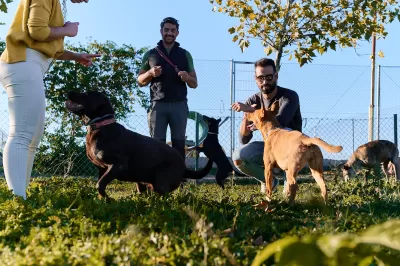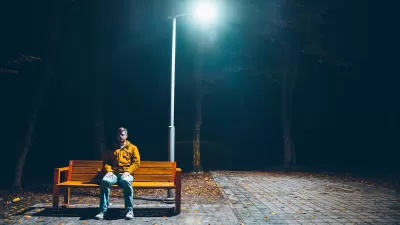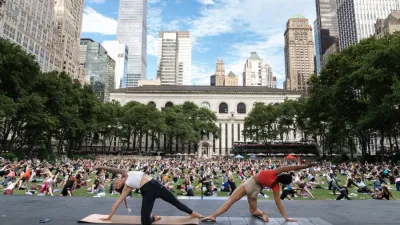While urban design alone can’t mend the tears in our social fabric, planning decisions and thoughtful, inclusive design can offer or hinder opportunities for interaction.

Writing in Bloomberg CityLab, Linda Poon describes a new book by Andy Field titled Encounterism: The Neglected Joys of Being In Person that highlights the importance of interactions with strangers. “The mental health benefits of even the briefest of conversations can add up, according to Field.”
According to surveys, the “loneliness epidemic” is affecting groups differently: younger people and those over the age of 50 are most likely to report feeling lonely and not interacting with many people outside their home, while “People with lower incomes and members of underrepresented racial and ethnic groups are more likely to be lonely.”
Field attributes the rise in loneliness to “a constellation of design decisions that ignore the value of social connections” in favor of convenience—and, during the pandemic, public health—such as self-checkout lanes, mobile ordering, and delivery services, as well as urban patterns that promote car-centric lifestyles and limit access to public space and community life.
The article includes several examples of cities that made concerted efforts to create opportunities for social interaction and build pleasant, safe, accessible public spaces. Poon notes that “Opportunities for psychologically restorative face-to-face interactions aren’t limited to parks and other public spaces. They occur aboard trains and buses during commuting, in supermarket lines and apartment building mailrooms, and other sites of workday congregation.”
Multifamily housing can also offer spaces for residents to mingle—if designed effectively. This is where zoning comes in: eliminating parking requirements, for example, can free up valuable real estate that could be used for common spaces.
Field admits that building community is about more than just “carefully arranged furniture.” Setha Low, author of Why Public Space Matters, says we “need to think more intentionally about creating a “public culture” within these spaces that is welcoming of people of different backgrounds and interests, and that invite both discussion and dissent.”
FULL STORY: City Life Is Too Lonely. Urban Planning Can Help.

Trump Administration Could Effectively End Housing Voucher Program
Federal officials are eyeing major cuts to the Section 8 program that helps millions of low-income households pay rent.

Planetizen Federal Action Tracker
A weekly monitor of how Trump’s orders and actions are impacting planners and planning in America.

The 120 Year Old Tiny Home Villages That Sheltered San Francisco’s Earthquake Refugees
More than a century ago, San Francisco mobilized to house thousands of residents displaced by the 1906 earthquake. Could their strategy offer a model for the present?

HSR Reaches Key Settlement in Northern California City
The state’s high-speed rail authority reached an agreement with Millbrae, a key city on the train’s proposed route to San Francisco.

Washington State Legislature Passes Parking Reform Bill
A bill that would limit parking requirements for new developments is headed to the governor’s desk.

Missouri Law Would Ban Protections for Housing Voucher Users
A state law seeks to overturn source-of-income discrimination bans passed by several Missouri cities.
Urban Design for Planners 1: Software Tools
This six-course series explores essential urban design concepts using open source software and equips planners with the tools they need to participate fully in the urban design process.
Planning for Universal Design
Learn the tools for implementing Universal Design in planning regulations.
Ada County Highway District
Clanton & Associates, Inc.
Jessamine County Fiscal Court
Institute for Housing and Urban Development Studies (IHS)
City of Grandview
Harvard GSD Executive Education
Toledo-Lucas County Plan Commissions
Salt Lake City
NYU Wagner Graduate School of Public Service





























